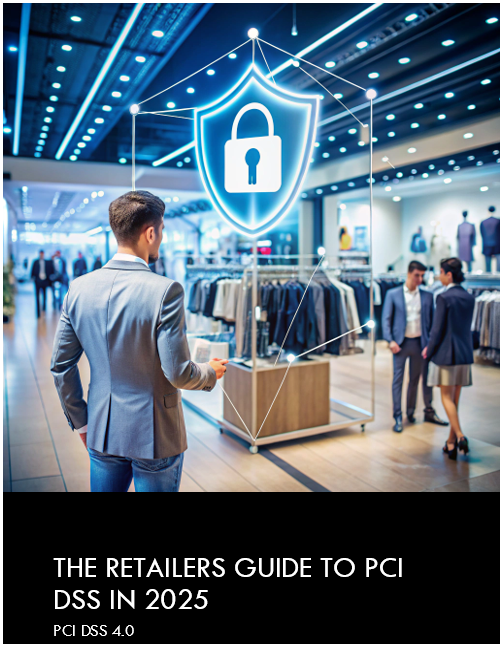Tech Trends Reshaping Retail
What’s Driving Innovation?
Retail thrives on blending digital and physical experiences. AI and machine learning now optimize inventory and enable cashierless checkouts via RFID tags, allowing real-time tracking and hyper-personalized shopping. Stores can pivot swiftly to demand, shifting from mass strategies to micro-targeting.
IoT devices like smart shelves monitor stock and store layouts, slashing manual checks. Contactless payments and digital wallets add seamless security. Together, these tools create frictionless, adaptive shopping journeys.
Cloud & SaaS: The Retail Backbone
Cloud infrastructure powers modern retail, scaling CRM, supply chains, and analytics. Over 90% of businesses rely on cloud SaaS, blending agility with shared security duties. Behavioral analytics track customer habits, while cloud syncs inventory across channels in real time, boosting efficiency and satisfaction.
Why Unified Commerce Wins
Unified commerce merges data, inventory, and promotions across all platforms, erasing silos between online and in-store sales. Real-time sync prevents errors that frustrate customers. Modular systems using MACH principles (Microservices, API-first, Cloud-native, Headless) let retailers innovate without disrupting operations, sidestepping legacy tech pitfalls.
Cyber Threats Targeting Retail
Top Risks Today
Retail’s blend of physical and digital systems invites attacks. Ransomware cripples operations during peak hours, while third-party vendor breaches expose sensitive data. Credential stuffing exploits weak logins, causing 80% of app breaches. Strong authentication and vendor audits are critical.
Omnichannel & IoT Weak Spots
Connected systems expand attack surfaces. Unsecured APIs and IoT devices (smart shelves, cameras) are entry points for hackers. Phishing dominates 58% of breaches, demanding employee training and strict access controls.
Compliance Simplified
Key Regulations
PCI-DSS 4.0 mandates encryption, MFA, and network segmentation for payment data. Privacy laws like GDPR and CCPA require transparent data use. Retailers need consent tools for loyalty apps and in-store tech to balance personalization with compliance.
Cross-Channel Consistency
Uniform security across POS systems, apps, and websites prevents gaps. Differing protocols (e.g., in-store vs. web encryption) invite breaches. CISOs must enforce enterprise-wide policies that marry compliance with innovation.
Overcoming Retail Hurdles
Legacy Systems & Silos
Outdated tech and fragmented teams slow security upgrades. Integrating IT, security, and operations prevents gaps from new IoT deployments. Budget constraints force CISOs to frame security as a growth driver, not a cost.
Tackling Technical Debt
Modernizing legacy systems with cloud-based, modular architectures boosts security. Phased updates and MACH adoption let retailers replace outdated components without disruption.
Future-Proof Strategies
Security-First Innovation
To succeed in today’s competitive market, retailers must place security at the forefront of all operational decisions. Embedding security into development workflows proves effective in mitigating risks early in the creation of new technologies. With shift-left practices, security assessments occur during the initial design phases of AI and machine learning projects. Moreover, early vulnerability testing brings potential issues to light before they become integrated into live systems.
Embed security in development via “shift-left” testing and zero trust for IoT. Train staff to spot threats, fostering a culture where security enables innovation.
Third-Party Vigilance
Third-party governance represents a key pillar in modern cybersecurity strategies. Retailers must continuously assess the security posture of all vendors and partners. This is particularly important for companies using multiple cloud providers and SaaS platforms. Regular audits ensure that these third parties adhere to PCI compliance standards and implement multi-factor authentication. Consequently, this reduces the likelihood of vulnerabilities originating outside the core organizational network.
In addition, continuous monitoring of third-party integrations is crucial. Retailers should set clear guidelines and performance metrics for vendor security practices. For instance, periodic reviews of API integrations help identify potential gaps in data synchronization that could lead to breaches. Retailers are also encouraged to implement contractual obligations requiring vendors to meet strict security benchmarks. Therefore, such vigilant third-party governance supports overall security by extending protective measures beyond immediate internal systems.
- Conduct regular security audits
- Establish performance benchmarks for vendors
- Integrate real-time monitoring of API connections
- Enforce contractual security obligations
How Should the Role of the CISO Evolve?
Modern chief information security officers must expand their roles beyond traditional risk management. Instead of solely focusing on defensive measures, CISOs now act as strategic enablers for innovation. They collaborate closely with executive teams to incorporate technology solutions that drive customer engagement and bolster trust. As a result, CISOs are expected to communicate cybersecurity as a value proposition rather than just a cost center.
To thrive, CISOs must foster cross-departmental coordination. This includes engaging with both the marketing and operations teams to achieve a balance between innovation and security. For example, when implementing AI-driven personalization techniques, CISOs need to ensure that data privacy measures are seamlessly integrated into the process. Additionally, crisis communication strategies must be refined to maintain public trust during any incident response. Therefore, evolving the CISO role into a hybrid of risk manager and business partner opens new avenues for growth and resilience.
CISOs should also be keen to incorporate modern commerce strategies, such as adopting MACH principles. These architectures enable the rapid deployment of new solutions without impacting existing security frameworks. Furthermore, by leading comprehensive security awareness campaigns across the organization, CISOs can drive a culture where every employee becomes a defender of the brand. Consequently, the evolution of the CISO role marks a pivotal shift in aligning security imperatives with business objectives.
What Are the Key Strategies for Future-Proofing Retail Security?
Retail’s future hinges on balancing innovation with ironclad security. Cloud modernization, unified systems, and proactive risk management build trust and agility. For CISOs, evolving from gatekeepers to strategic partners is key to thriving in retail’s dynamic landscape.





